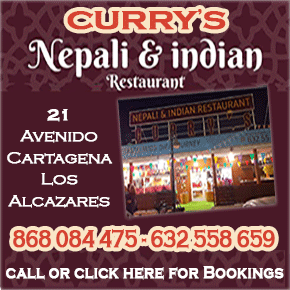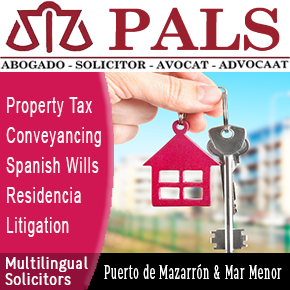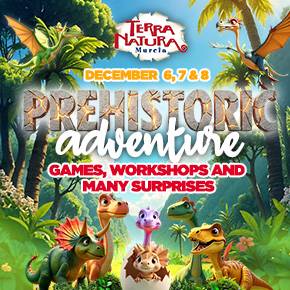

Guidelines for submitting articles to Mar Menor Golf Resort Today
Hello, and thank you for choosing Mar Menor Golf ResortToday.com to publicise your organisation’s info or event.
Mar Menor Golf Resort Today is a website set up by Murcia Today specifically for residents of the urbanisation in Southwest Murcia, providing news and information on what’s happening in the local area, which is the largest English-speaking expat area in the Region of Murcia.
When submitting text to be included on Mar Menor Golf Resort Today, please abide by the following guidelines so we can upload your article as swiftly as possible:
Send an email to editor@spaintodayonline.com or contact@murciatoday.com
Attach the information in a Word Document or Google Doc
Include all relevant points, including:
Who is the organisation running the event?
Where is it happening?
When?
How much does it cost?
Is it necessary to book beforehand, or can people just show up on the day?
…but try not to exceed 300 words
Also attach a photo to illustrate your article, no more than 100kb

A great walk up the castle hill of Yecla and through the old town
An easy and healthy way to walk through the history of Yecla!
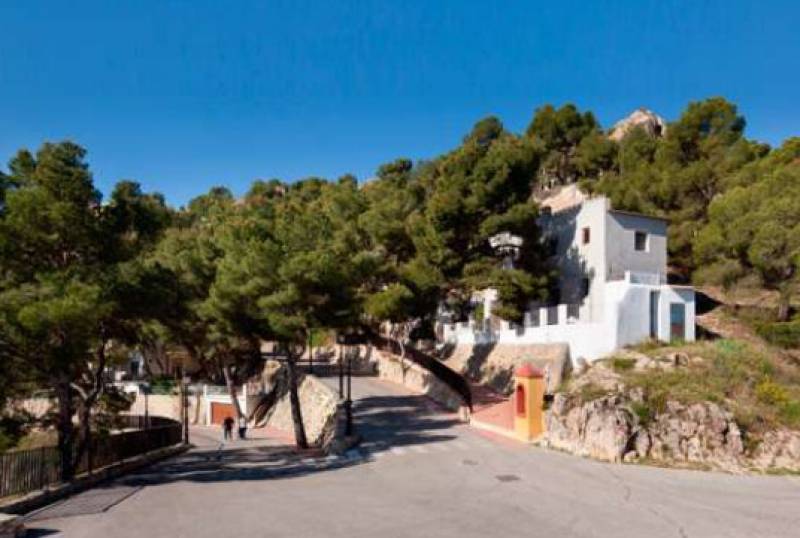 This pleasant 5.2-kilometre walking route in Yecla takes around an hour and a quarter and includes a climb up the Cerro de Castillo, where the sanctuary and the remains of the castle can be seen and there are great views over the centre and the surrounding countryside, then crossing the town to return to the starting point at the Edificio Bioclimático.
This pleasant 5.2-kilometre walking route in Yecla takes around an hour and a quarter and includes a climb up the Cerro de Castillo, where the sanctuary and the remains of the castle can be seen and there are great views over the centre and the surrounding countryside, then crossing the town to return to the starting point at the Edificio Bioclimático.
Medieval Yecla
At the top of the Cerro del Castillo are the remains of a medieval Islamic/Moorish fortress, known in the middle of the 12th century as “Hisn Yakka”. Close to the walls of the castle you can visit the houses of the village associated with this fortress.
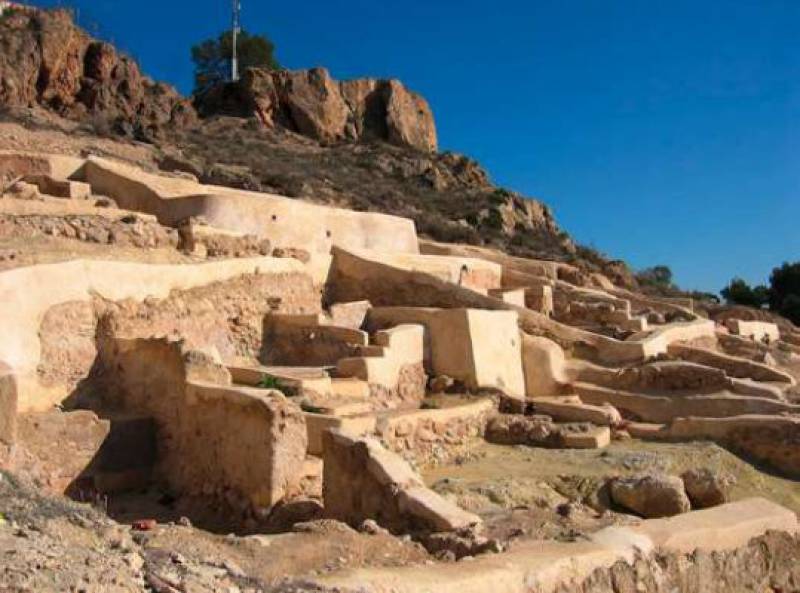 Late Medieval Yecla, which dates back to the 15th and 16th centuries, is located adjacent to the northern slope of Cerro del Castillo, where the current neighbourhood of San Cristóbal was the Jewish quarter and the Christian area was based around the Old Church and grew in the direction of Santa Bárbara Hill. Today these streets are narrow and winding, some of them with steep gradients due to the local topography.
Late Medieval Yecla, which dates back to the 15th and 16th centuries, is located adjacent to the northern slope of Cerro del Castillo, where the current neighbourhood of San Cristóbal was the Jewish quarter and the Christian area was based around the Old Church and grew in the direction of Santa Bárbara Hill. Today these streets are narrow and winding, some of them with steep gradients due to the local topography.
The suggested route is as follows, starting and ending at the Edificio Bioclimático:
From the Edificio Bioclimático, walk a few minutes until reaching the cemetery and then follow the Paseo del Yeclano Ausente. After a few steep uphill curves you arrive at the top of the Cerro del Castillo, where you can see the sanctuary of La Virgen del Castillo and the remains of the Islamic settlement Hisn Yakka.
Now go down from the sanctuary along the winding Paseo del Barco de Ávila until you reach the back of the church of La Asunción, commonly known as the Old Church. From here, leave the main road and go straight down Calle de Isabel la Católica. A few metres down take a curve to the right that leads you to Calle Tetuán. Continue west along the old, narrow, winding streets, passing Colegio de La Pedrera, and then turn left towards Las Herratillas health centre and Felipe VI secondary school. At the next crossroads take a sharp turn down Calle Hernán Cortés.
Here there is a viewpoint that allows you to take a break.
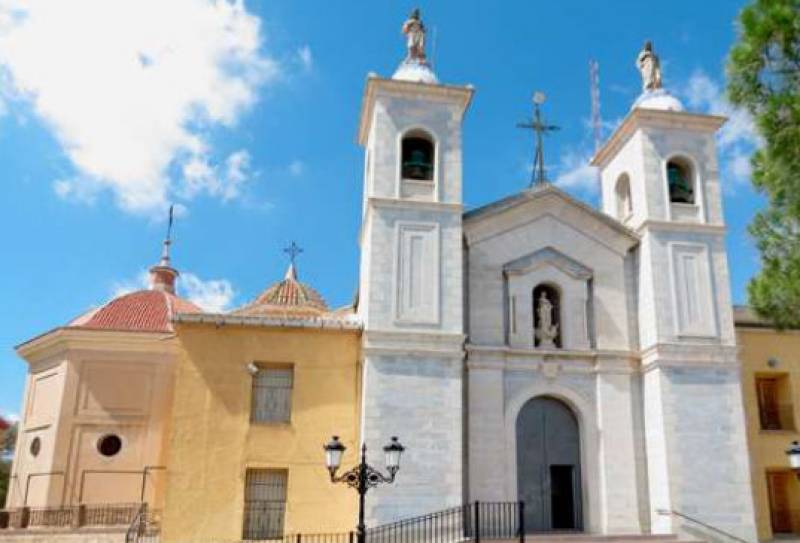 Once past La Pedrera school, on Calle Algeciras, you can take a detour from the route on Calle Peñón, along which is an intriguing little square: the Placeta Cerro de Santa Barbara, a calm and secluded site with interesting panoramic views of the oldest and most remote Yecla.
Once past La Pedrera school, on Calle Algeciras, you can take a detour from the route on Calle Peñón, along which is an intriguing little square: the Placeta Cerro de Santa Barbara, a calm and secluded site with interesting panoramic views of the oldest and most remote Yecla.
Calle Hernán Cortés is the closest road to the Old Town that goes end-to-end through Yecla. After passing by Las Herratillas school, climb a few steps surrounding the church of Santa Bárbara and walk down down Calle Santa Bárbara, reaching the pedestrian street Calle del Niño (which becomes Calle Hospital), finally reaching the Cruz de Piedra. This is a great cross that joins Calle Hospital and Calle Corredera, and it is the beginning of Calle Cruz de Piedra.
Once past the Cruz de Piedra, at the next corner turn up Calle de San Isidro, which leads back to the cemetery (on Calle Abad José Sola) and then the the Edificio Bioclimático.
Full details of the route (and a map) can be found on the tourist office’s leaflet here – in English as well as Spanish!
If visiting Yecla don’t forget to make sure one of your first ports of call is the tourist office (Plaza Mayor, 1, email turismo@yecla.es, telephone 968 754104).
For more local events, news and visiting information go to the home page of Yecla Today
Oficina de Turismo de Yecla
In early 2025, due to renovation work at the usual office, the service is located on the other side of the Plaza Mayor at Calle Epifanio Ibáñez nº 2 (click for map).
 Yecla is a large municipality in the north of the Region of Murcia, home to just under 35,000 people, and these days is best known for its wines, which enjoy Denomination of Origin status, and its furniture production, which has its origins in the abundance of pine trees on the mountainsides and the high plateaux.
Yecla is a large municipality in the north of the Region of Murcia, home to just under 35,000 people, and these days is best known for its wines, which enjoy Denomination of Origin status, and its furniture production, which has its origins in the abundance of pine trees on the mountainsides and the high plateaux.
 While visitors in the 21st century may be attracted primarily by wine tourism, the town (or city, as it was proclaimed in 1878) also has a wide historical, cultural and natural heritage, and an identity quite different from the coastal areas of the Region of Murcia. For this reason it is often grouped together with its neighbour and fellow wine-producing area Jumilla as part of the Altiplano area.
While visitors in the 21st century may be attracted primarily by wine tourism, the town (or city, as it was proclaimed in 1878) also has a wide historical, cultural and natural heritage, and an identity quite different from the coastal areas of the Region of Murcia. For this reason it is often grouped together with its neighbour and fellow wine-producing area Jumilla as part of the Altiplano area.
Yecla borders with Castilla-La Mancha and the Region of Valencia and is closer to Alicante coastal areas than much of Murcia. These visitors come to see the historic old town itself - an atmospheric and interesting place, crammed full of history - the natural beauty of Monte Arabí, with stunning views for those who enjoy the outdoors, the gastonomy and of course the wine route.
 Yecla boasts cave paintings from 10,000 years ago in Monte Arabí, a Bronze Age settlement at El Arabilejo, Iberian remains in El Pulpillo and a Roman administrative centre at Los Torrejones as well as the remnants of the 11th century Moorish castle on the hill behind the town. More modern (and complete) testimony to the past are the buildings in the town centre, which include the grandiose Basílica de la Purísima, with its striking blue dome, the archaeological museum and the attractive Plaza Mayor, where the 16th century Town Hall stands alongside the Renaissance Casa de los Alarcos, the clock tower and the old grain store.
Yecla boasts cave paintings from 10,000 years ago in Monte Arabí, a Bronze Age settlement at El Arabilejo, Iberian remains in El Pulpillo and a Roman administrative centre at Los Torrejones as well as the remnants of the 11th century Moorish castle on the hill behind the town. More modern (and complete) testimony to the past are the buildings in the town centre, which include the grandiose Basílica de la Purísima, with its striking blue dome, the archaeological museum and the attractive Plaza Mayor, where the 16th century Town Hall stands alongside the Renaissance Casa de los Alarcos, the clock tower and the old grain store.
 The tourist office holds a full selection of leaflets, maps, pre-planned routes, accommodation and restaurant options and information about visiting Yecla for both individuals and groups.
The tourist office holds a full selection of leaflets, maps, pre-planned routes, accommodation and restaurant options and information about visiting Yecla for both individuals and groups.
There is parking close to the tourist office, although those driving to Yecla for the first time are advised to park in Calle Perales.
For further information go to the home page of Yecla Today.
Opening hours:
Tuesday to Friday 8.00 to 15.00
Saturdays 10.30 to 14.00 and 17.00 to 19.30.
Public holidays 10.30 to 14.00
Click for map, Yecla tourist office










